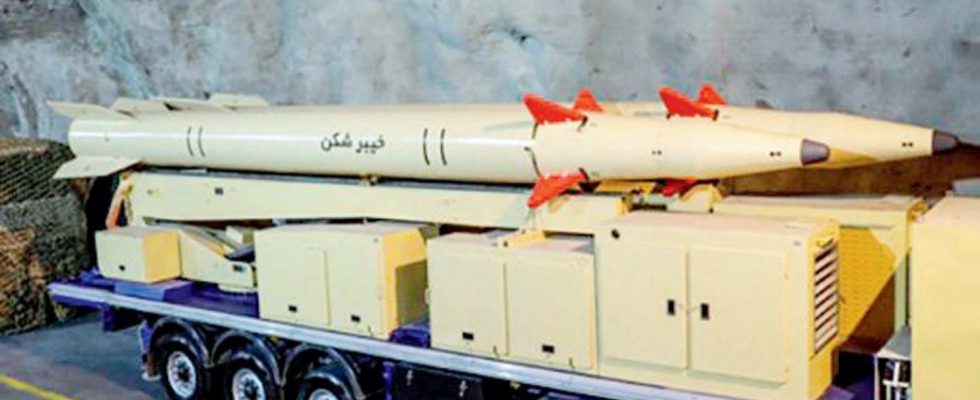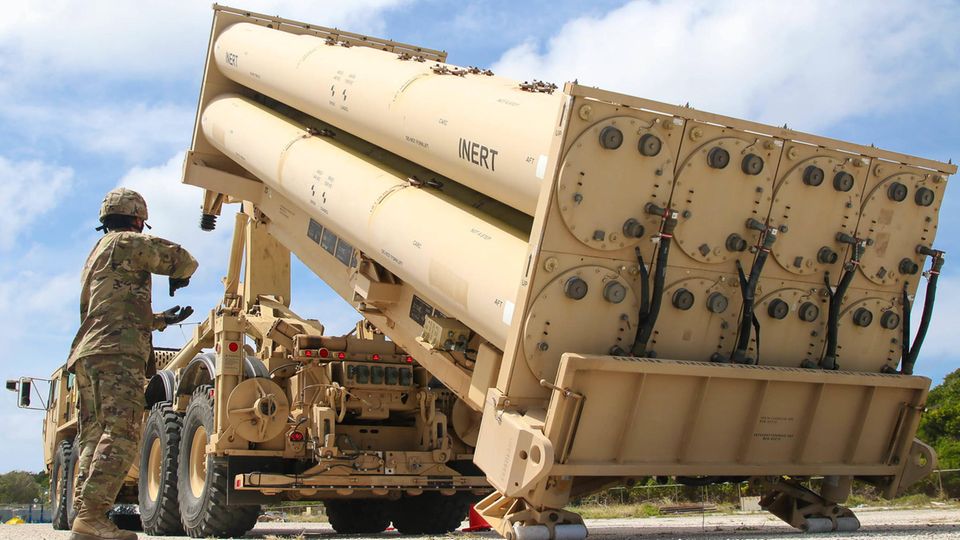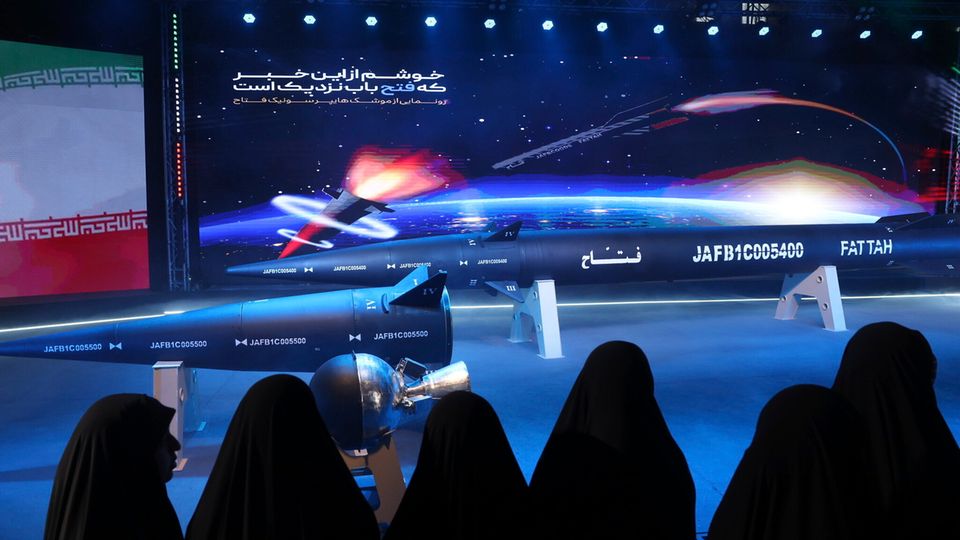Armament
Missile fortress Iran – that’s why the superpower USA cannot punish the mullahs without risk
The Kheibar Shekan’s warhead can maneuver with the fins and thus exit its ballistic path.
© Iran
Iran used its most advanced missile against an insignificant target in Syria. This was a clear warning to the USA and Israel. Every operation against Tehran carries the risk that Iranian rockets and cruise missiles will retaliate. These weapons can even reach southern Europe.
The USA has put a lot of effort into preventing Iranian nuclear weapons. So far with success. But they could not stop Iran’s buildup of a massive range of precision weapons. Despite all the sanctions, the arsenal ranges from simple drones to cruise missiles and ballistic missiles. Only very few countries in the world have such opportunities. This will make it Iran is not becoming a global superpower, but it is growing out of the framework of a limited regional power. Because Tehran is able to develop military power well over 1,000 kilometers away from its own country.
Most modern rocket
The January 15 attack on an alleged Israeli “spy headquarters” near the US consulate in the northern Iraqi city of Erbil and on targets in northern Syria shows that Tehran is now ready to use that power. And Iran demonstrated how effective its own weapons are. Satellite images show the extremely precise impacts of Iranian missiles. This proves Tehran’s ability to hit targets precisely. And it can be assumed that the Soumar cruise missiles, with a range of at least 2,500 kilometers, will also achieve this accuracy. In principle, they could target targets in southern and eastern Europe. It can be assumed that missiles that cover Central Europe will be added in the future.
Specifically, the Kheibar surprised Shekan. The solid-fuel rocket was used against a target in Idlib. Their range is said to be 1,500 kilometers. The special feature lies not only in the precision. Its warhead has limited controllability, making it a challenging target for air defense. A clear warning, because this rocket could also have reached Israel.
No military strike without risk
These attacks are reshuffling the cards in the global power poker. Until now, such strikes were an option reserved for the USA. Israel is also nearby. With precise operations, the military potential of another country – often called a “rogue state” – was reduced. Usually without risk for the USA because the enemy could not retaliate in the same way.
This rule does not apply to Iran. After the killing of Qasem Soleimani, Iran responded with a missile attack on US facilities in Iraq. The new missile increases the danger. Within range of its weapons are a myriad of potential targets of the United States and its allies of varying quality. It would be impossible to protect them all with an appropriate air defense bell. The idea of eliminating Iran’s arsenal with a limited strike, after which Tehran would then be defenseless, would be equally hopeless. The sheer number of weapons that are stored in bunkers and tunnels speaks against this. US intelligence estimates that Iran has 3,000 long-range ballistic missiles and a rapidly growing inventory of cruise missiles. If you add simpler rockets with a shorter range, numbers of 60,000 to 200,000 are given.
Rocket power despite sanctions
In addition, there is the country’s deeply echeloned air defense. Iran has more air defense systems than the entire EU. Little is known about its performance, but it is believed that Tehran has left the old Soviet systems behind technologically. Even without nuclear weapons, Tehran has maneuvered itself into an almost unassailable position. Any attack would have to be met with a counterattack, in which Iran could choose the next level of escalation. So it could remain a mere exchange of blows, but Tehran could also choose its target in such a way that the USA would have to react in turn. A game of escalation that could end up – at least in theory – leading to a full-blown war. But the Tehran leadership also wants to avoid it. Despite all the sanctions, the regime is on the verge of an A-bomb. The worst-case scenario would be this: First, Iran builds a conventional missile force that deters an attacker. This protection is then followed by nuclear weapons.
Iran’s example should inspire other countries. Also Saudi Arabia wants to become a missile power. No country has the ability to build a fleet or air force that could rival the United States. But drones, cruise missiles and missiles without nuclear weapons give them the opportunity to attack distant enemy targets. The days when the US could carry out “castigation” without risk are coming to an end. The development can hardly be stopped. Iran has been under the strictest sanctions for a long time and was still able to become a missile power. The Iranians are masters at assembling their military assets from civilian components. Iran is also an arms supplier to Russia, and it can be assumed that Moscow will not only pay with raw materials and foreign currency, but also with the transfer of arms know-how.





